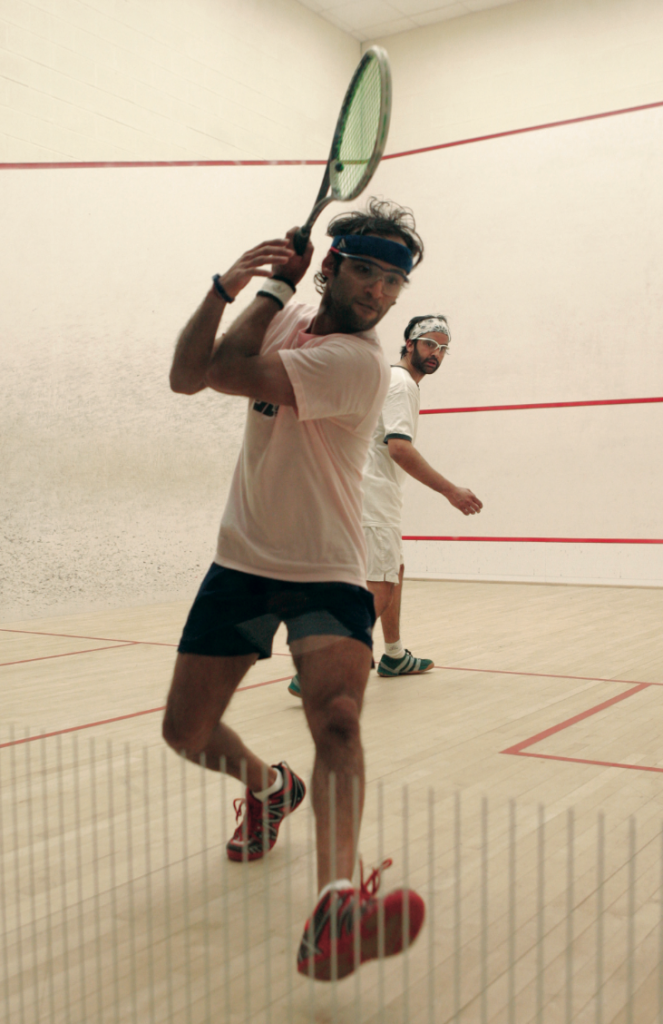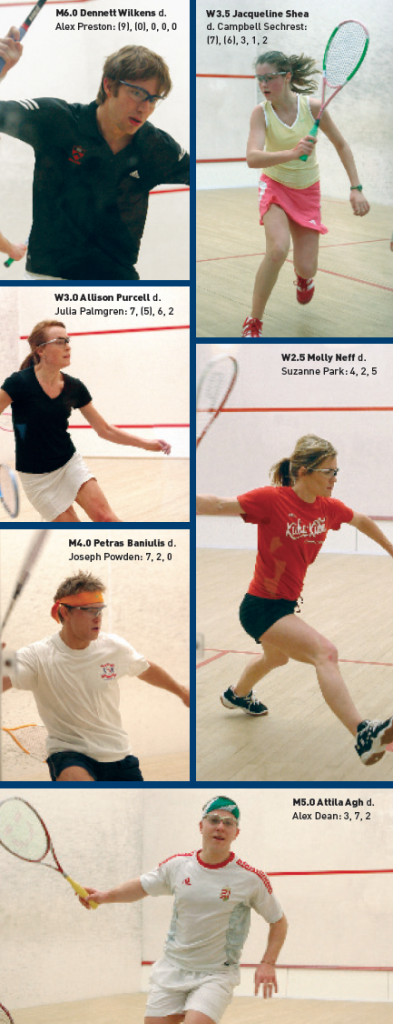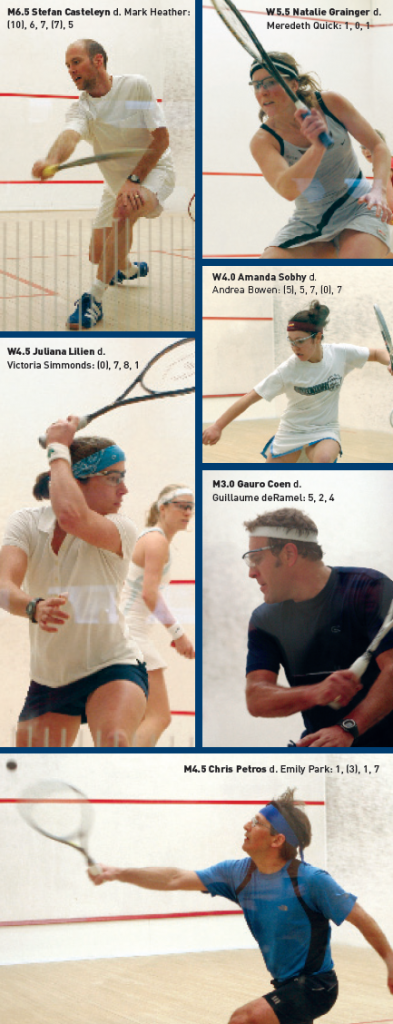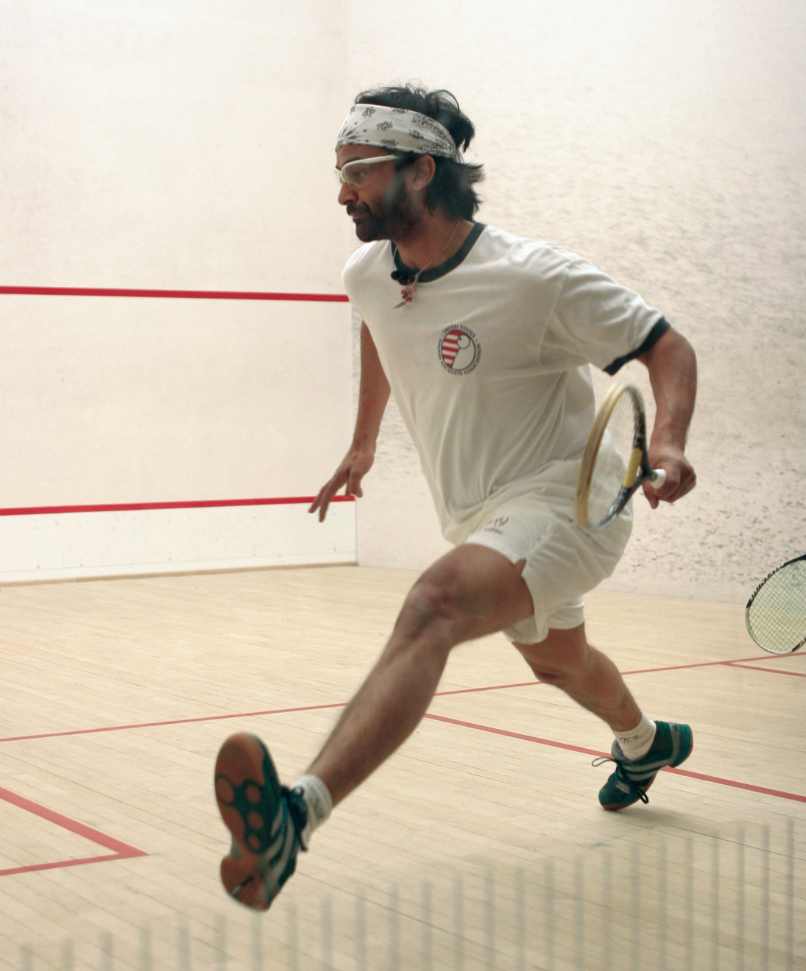
Every now and then, an idea germinates that just works. At first it seems a bit crazy or that it could create more of a burden than the effort needed to pull it off is worth. But as the concept gains momentum, and things start falling into place, everyone involved starts buying into the plan—and the die is cast. And if everything works as hoped, there will be at least one piece of the puzzle that leaves everyone begging for more.
Ten years ago, the second and last independent Skill Level Nationals was held in Atlanta. A little over 200 players showed up to play in one of 13 divisions including the Men’s 6.5, which Angus Kirkland won over Michael Puertas in three. But for whatever reason, the idea of maintaining a skill level national championship that was separate from the already popular age group event just never caught on. The next year, Trinity hosted the combined Age Groups and Skill Level Nationals, but only 128 players entered the skills. Perhaps the reason for the skill level decline was in part because the rating system was too new and misunderstood, but for whatever reason the skills just limped along for several years.
But by 2004, the number of entries for the skill level portion of the US Championships had climbed back over 200. Last spring, at about the same time that the US Championships were being played at Yale, an exchange of emails between US Squash CEO Kevin Klipstein and John Musto resulted in the creation of a task force to consider sweeping changes to the US Championships structure. Before long, the announcement was made that, once again, the skill level nationals would be split out from the US Championships—with the first installment to be held in New York City. In March, alongside the Bear Stearns Tournament of Champions, the US Skill Level Championships were born. And to say the event was a success would be an understatement.
The last time a national championship was held in New York City, other than doubles or Howe Cup, was 1986 when Hugh Labossier pulled off a stunning upset over Kenton Jernigan in the Hardball Nationals. But if the 322 players who were there this year have it their way, New York will be hosting the US Squash Skill Level Championships indefinitely.

So why the home run this time around? “I think there were four factors, really,” said a beaming Vijay Chitnis, Director of US Squash Junior Development. “Being in New York City was huge because even if people lost they got to hang out in Manhattan. The Tournament of Champions was a hit because everyone got to see the top pros play, most for the first time. We offered early bird sign-ups, which brought with it a discount off the entry fee. And you knew you were going to play people around your own level.” And to top it off, there were memorable matches during the weekend that will leave an indelible mark on this inaugural event. As luck would have it, Chitnis himself was squarely in the middle of the most compelling story.
Vijay Chitnis. The man behind the rapidly improving US Junior Teams; the man who has been driving junior development for the past three years; the man who has boldly predicted that “in two year’s time, the US Junior Women’s Team will win the Junior Women’s World Team Championships,” is also a talented player who somehow found a way to put himself into position to win the Men’s 5.5 division.
No Chitnis did not take home the 5.5 title. But he came oh so close. And oh so close to crashing out in the quarterfinals too. After blowing through his first two matches as the No. 3 seed, Chitnis ran into a determined Will Carlin who jumped on him from the start. “He hammered me in the first two,” said Chitnis of the thumping he got from Carlin early. “It was one of those things. I was in the quarters and really wanted to win. And then you get on the court and you’re nervous and not moving. And Will was hitting some good drops. He was just hammering me.”
 Hammering to the point of Chitnis finding himself down two games and 8-1 in the third. Four saved match balls later, Chitnis closed out the match 9-0 in the fifth. Then it happened again. This time playing the No. 2 seed, Vineet Asthana, Chitnis was all but buried. “I was down two nothing, and Vineet had match ball at 8-7 in the third,” recalled Chitnis. “It was tight, but I saved two match balls there and two more in the fourth when I was also down 8-7.” The result? Another 9-0 fifth for Chitnis that put him in the finals to face Vineet’s brother, Vinay.
Hammering to the point of Chitnis finding himself down two games and 8-1 in the third. Four saved match balls later, Chitnis closed out the match 9-0 in the fifth. Then it happened again. This time playing the No. 2 seed, Vineet Asthana, Chitnis was all but buried. “I was down two nothing, and Vineet had match ball at 8-7 in the third,” recalled Chitnis. “It was tight, but I saved two match balls there and two more in the fourth when I was also down 8-7.” The result? Another 9-0 fifth for Chitnis that put him in the finals to face Vineet’s brother, Vinay.
Instead of giving himself a break, Chitnis seemed to enjoy digging himself into holes and promptly dropped the first two games. “I was down two nothing again, and between the second and third games, when Vinay was being coached by Vineet, I said to him, ‘Vinay, you know I’m coming back.’” And having already seen Chitnis survive his two previous matches, Vinay simply said, “I know.”
True to his word, Chitnis came out firing in the third and took it 9-5, and then followed it up with a two-minute 9-0 pounding in the fourth. “And then in the fifth I was up 8-5, and I blew it,” said Chitnis who had finally been in the driver’s seat for a change. “I had two match balls, but I felt he was coming back.” He did, and Vinay finally put Chitnis out of his misery 10-8 in the fifth.
The intriguing part of the display of grit and determination put on by Chitnis is that he hadn’t been playing much leading up to the tournament. There’d simply not been the opportunity with all of his time being put in to helping US Squash pull off the myriad of national championships it manages from February through April. However, Chitnis is no stranger to success on the squash court.
Though his parents are originally from India, Chitnis was born in Toronto, Canada, and first picked up a racquet when he was 14 years old. “John Power took me to my first tournament as a junior, and a few years later I was at Brown University playing for Stuart leGassick,” Chitnis said longingly. “I was at Brown from 1990 to 1994, but I only played squash my freshman year. It was hardball, and I was terrible.” Terrible to the point of being selected as an All-American. “I totally lucked out,” Chitnis said laughing. “And I got Brown Athlete of the Year which was so awesome!”
After graduating from Brown, Chitnis spent seven years in India. Surprisingly, Chitnis played no squash while in India. “I was just traveling and working,” said Chitnis. “I was at a workshop repairing trucks (laughing), you know, in the auto parts business.” From there it was on to St. Lawrence University where he landed the head coaching position of both the men’s and women’s squash teams from 2001 to 2004.
 “They had six glass back courts when I arrived,” Chitnis recalled about St. Lawrence. “But I ended up getting three more. We even hosted the intercollegiate singles championships with the WISPA portable four-glass wall court. We had to have 10 courts, so we put one up in the middle of the track, shut down the lights, and it was awesome (grinning widely).”
“They had six glass back courts when I arrived,” Chitnis recalled about St. Lawrence. “But I ended up getting three more. We even hosted the intercollegiate singles championships with the WISPA portable four-glass wall court. We had to have 10 courts, so we put one up in the middle of the track, shut down the lights, and it was awesome (grinning widely).”
Which brings us back to the present. Chitnis took on the Junior program at US Squash in 2001. Since then, the US Junior Closed has spun into three events, each of them an invitational. And now Chitnis is so confident in the progress of the girls, he’s stuck his neck out to forecast the World Championship in 2009. A bold statement, but just about everything else Chitnis has done has worked out.
For four days, New York City played the perfect host to a nearly perfect event. “We had a really good team on the ground running the event,” said Musto. “Zoe Brunson, the tournament Director, went from site to site to make sure things were running smoothly, and everyone was in constant communication.”
The US Squash Skill Level Championships was a gamble that paid off in its first go round. With the Yale and Harvard Clubs being so close to Grand Central Terminal, home of the Tournament of Champions, and the NY Sports Club-Uptown being just two stops away on the subway’s Green Line 4/5/6, the tournament felt like one cohesive unit. Even with the semi-challenging commute across to the east side to Sports Club/LA, this first time event is begging to become a fixture in New York. If there was a glitch, it was that the anticipated clash between top American Julian Illingworth and any one of a number of the international players entered in the Men’s 6.5 (including former World No. 7 Stefan Casteleyn who won the event) never happened. Illingworth was busy becoming the first American ever to win a round in the main draw of a major PSA event (more on that on P. 20), and was forced to withdraw from the Skill Levels.
The success of a Championship event is often times dependent on the perks being offered, but it is the remarkable moments on the playing field that people remember most. In tennis, the French Open comes to mind when, in 1989, a 17-year-old Michael Chang shocked World No. 1 Ivan Lendl in a four-and-a-half hour, five set round of 16 marathon, and ultimately became the first American in 34 years to win the tournament by beating Stefan Edberg in the final. Or how about the 1991 US Open when 39-year-old Jimmy Connors made his improbable run to the semis. While Vijay Chitnis’s Houdini act at the US Squash Skill Level Championships may not have the notoriety of those staged by Chang and Connors, it did during the weekend at the Harvard Club in New York City. And it was something those who were there will remember for a lifetime.


